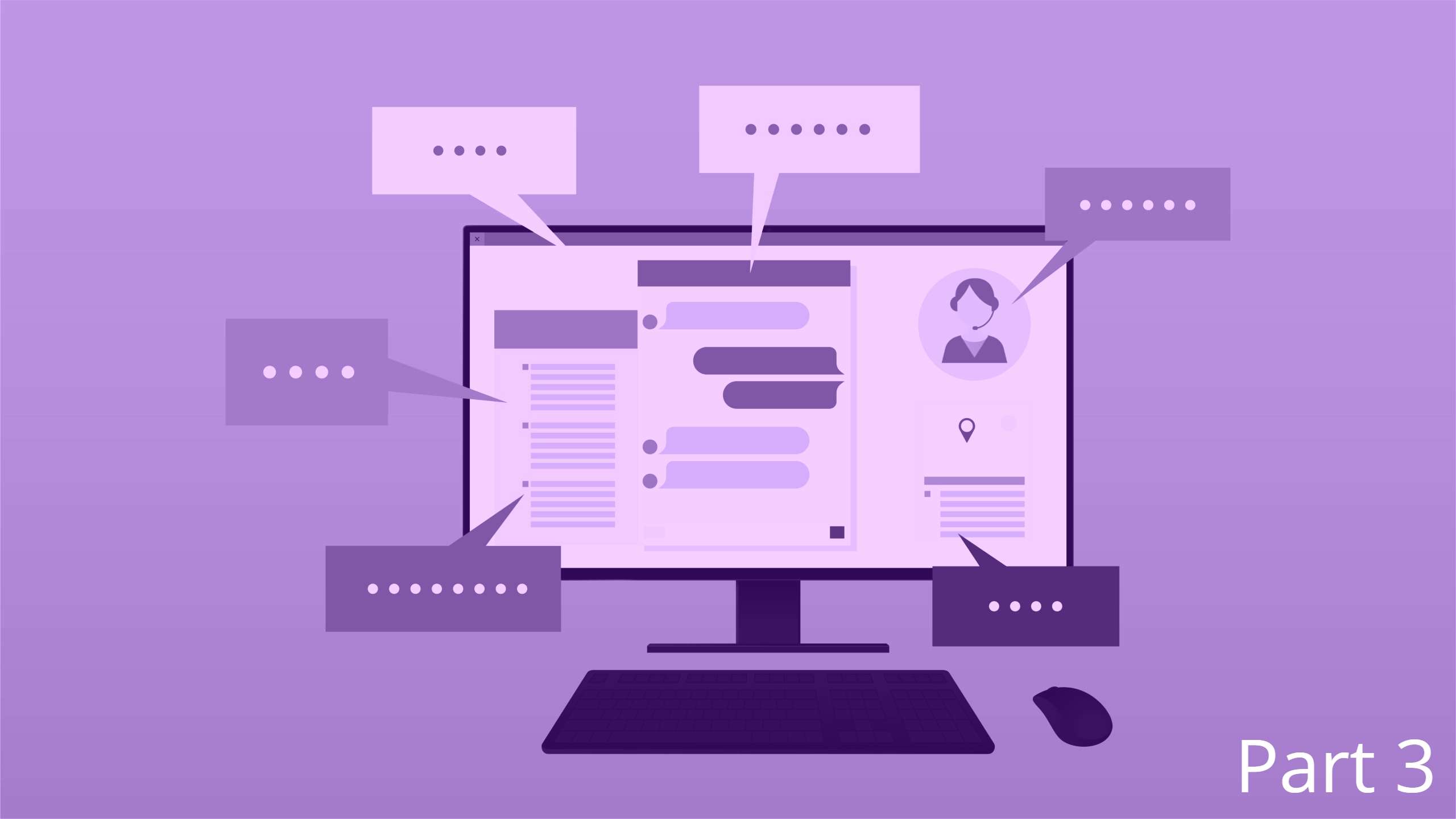Building Strong Relationships with B2B Customers who Prefer Live Chat – Part 3
For the third and final part of our three-part series (Part 1 and Part 2) on building and maintaining strong relationships with customers who prefer live chat, we’re going to look at an area some companies forget to evaluate entirely. In the first part of our series, we focused on the pre-conversation efforts of setting yourself up for successful chat interactions with B2B customers. The second part was all about improving the actual chat experience for both the agent and the customer. For this last part, we’ll focus on how great support teams spend time after the conversation to make sure the needs of the customer were met and use the information uncovered during the chat to improve their operations.
Part 3 – After the conversation
- Store all chat conversations under both a customer and contact profile – If you aren’t using a chat solution that logs and stores the conversation with your customer support software, it’s time to seriously think about changing technology. Simply put, not everyone at a company may prefer chat, but having chat conversations referenceable at the company level helps support agents in multiple ways. It prevents them from contradicting what another agent said, and they can even search chats to find a solution that may have worked for a different person at the same company.
- Send an automated follow up to the customer – When a chat conversation ends, it creates another touchpoint for B2B companies to capitalize on to strengthen and improve the customer relationship. This touchpoint is often in the form of an automated email that’s similar to what a customer would receive when they submit a support ticket. It can include several things including a recap of the chat and an opportunity to rate the support agent’s performance. Also, if it’s appropriate, the email can even have customer-specific information promoting a user conference or event.
- Have agent assign tasks and action items after the chat as needed – Sometimes in a B2B chat conversation, multiple issues can be brought up at once. The agent may work with the customer to solve the main issue, but there may be an issue or two that are lower in priority that the customer still wants the agent to help solve in the next few days. To keep track of these additional issues, companies can leverage task management technology within their support software to assign additional follow-up action items from the conversation to development, IT, or other departments. It should be up to the original agent to close the loop and make sure those additional tasks are completed as well.
- Report on chat communication and monitor the cadence – What is said in a chat conversation isn’t the only thing that matters. Take a step back and look at the overall cadence of the chat and the chat patterns of the customer. When do they chat in? How long do the chats usually last? What kind of customer support ratings does the customer give the chat? All these metrics can be reported on and should be monitored. If a customer starts chatting with your support team less and less frequently, and the communication across other channels isn’t up, it may be a sign the customer is at-risk of churning. It could also mean that the customer is getting better at using your self-service solutions, and checking your site analytics can help clarify the decrease in communication. Either way, by keeping an eye on this data, you can have your success team reach out to the customer before it’s too late.
We hope you found our series helpful! Mastering all facets of chat communication has become a top priority of great support teams. Make sure to check out Part 1 and Part 2 if you missed them!





